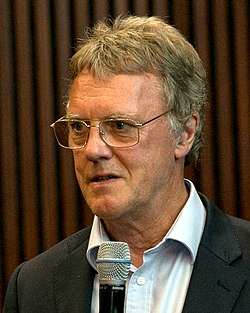This article is an orphan, as no other articles link to it . Please introduce links to this page from related articles ; try the Find link tool for suggestions. (June 2025) |
| Capo d'Orlando Award | |
|---|---|
 Peter J. Ratcliffe, winner of the scientific award in 2021. | |
| Genre | Scientific, cultural |
| Frequency | Annual |
| Location(s) | Vico Equense |
| Years active | 1999 – present |
| Founders | Dr. Umberto Celentano |
| Website | https://www.premiocapodorlando.it |
The Capo d'Orlando Prize, promoted by the Mineralogical Museum of Campania, is a recognition granted in Vico Equense since 1999 "to those who achieve outstanding results in the world of multidisciplinary research, in the field of science communication and science journalism, in museum management, and in the promotion of science through the Internet". [1]